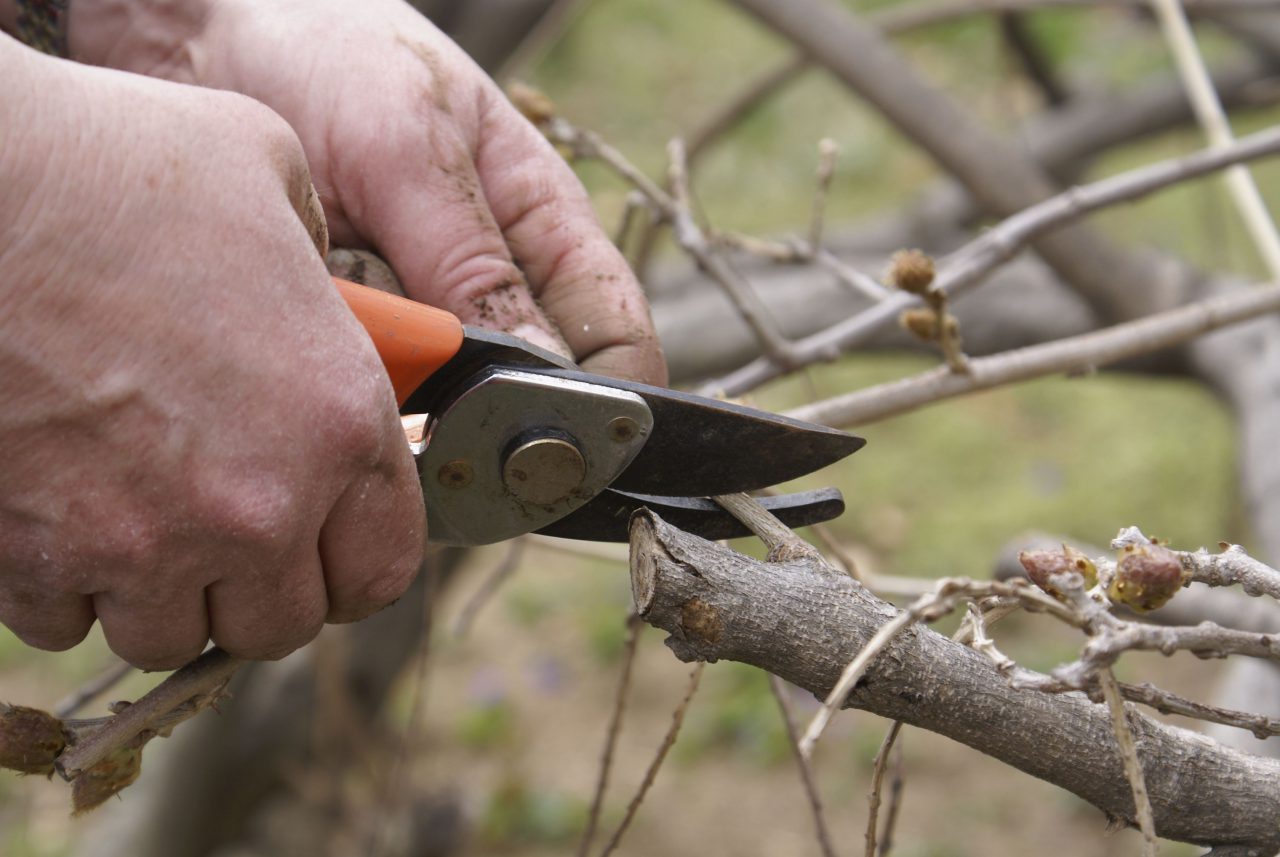Lots of gardeners greet winter initially with a sigh of relief: They no longer have to worry about not enough or too much rain, fertilizing, and weeding. Taking time off from gardening is indeed welcome for many of us. However, I would submit that winter is an important gardening season — and I’m not talking about filling your garden with plants of “winter interest,” a cliché if there ever were one.
Winter is the season for observing, which, in case you didn’t know, is a necessary garden activity. Are you wondering what there is to observe? Let me go down the list.
Winter displays the backbone of your garden, and by backbone I am talking about trees and shrubs since so many perennials disappear in the winter and are of negligible interest. Trees are important in a garden because they give height and break up the vista — important unless you’re after the prairie look. However, trees age, limbs break off, and they provide shade, sometimes wanted, sometimes not. Now is the time to look at your trees to see if they require some pruning.
Determine whether you admire the shape of the tree or whether it would look better minus the limb that overhangs the house. Is it providing too much shade? Sometimes the removal of one or two limbs can increase the amount of sunlight substantially. Remember that as gardens mature they tend to become shadier. It is far easier to look at tree shapes minus their leaves than when they are enshrined in greenery.
Next look at your shrubs. Shrubs can get, well, shrubby, meaning that they are too thick and would benefit from pruning. Even camellias benefit from a good pruning. Camellias come in different sizes and shapes: Some are columnar, some have a pyramidal form, while others are more rounded. Keep this in mind while pruning. The river birch may benefit from a light pruning, especially of the lower limbs, so that the bark — one of the main reasons for growing this small tree or large shrub — is obvious for all to see.
If you’re growing sustainable roses, now is the time to reach for the pruning shears. These roses are not heavily pruned as are the hybrid teas, and the general rule of thumb is to never prune more than a third of the shrub. Take out all the dead canes (something I do year-round), and take out those weak secondary canes, especially those that are growing at weird angles. I failed to do this for one of my China roses, Cramoisi Superieur, for two years because the shape was pleasing. Now she is a mass of canes, leaving me with more work than if I’d gently pruned her every year.
“Winter interest” has become a cliché, covering everything from dead ornamental grasses to every red berry that has ever existed. To me, these aren’t the true plants offering us “winter interest.” Tan ornamental grasses should be cut back. I don’t care how much they move in the wind: They are dead tops of roots awaiting the warmer weather. While I enjoy winterberry holly, Ilex verticillata, many hollies leave me cold, with their prickly leaves and seeds that sprout all over my garden.
To me winter interest consists of all the greens in the garden, from the dark green of camellias to the lighter green of Sabal minor. I love the contrasting greens with the blue green of the blue spruce right next to the yellow green of Chamaecyparis. This year an early freeze caused the leaves to stay on my Japanese maple; the orange leaves contrast beautifully next to the evergreen leaves of my windmill palm, Trachycarpus fortunei. My advice is to notice the different shades of green and to plant trees and shrubs keeping these contrasts in mind.
The days are subtly getting longer and there is fresh movement in the garden. Look carefully and you’ll see the tips of many bulbs, particularly daffodils, coming up. We used to worry about them, knowing that there will be more cold weather before it starts to get warmer, but now we understand these bulbs are tough and generally know what they are doing.
Notice the swelling of the nodes on roses, which never go completely dormant here in the South. Notice which variety has kept its leaves and which variety has shed its leaves: all these rose varieties are different from one another, some being more attractive than others. Have you given a shrub rose three years and still find yourself disapproving of its shape? By all means cut the umbilical cord and discard it. For whatever reason, if it hasn’t garnered approval in this amount of time, you can rid yourself of this ugly duckling that refuses to grow into a swan.
Winter is for reading garden catalogues. I mark mine up — they’re part of my daydreaming process — and will slowly start to whittle down the list as I’m running out of room in the garden. Gone are the days when I could order with abandon. Now is the time to start your garden in a new direction. Tired of ornamental grasses, which were the rage several years ago? You might want to turn to bulbs, many of which are deer-resistant. Or you might suddenly discover irises. Experiment in your daydreams.
Winter weeds do exist. I marvel at how chickweed thrives in freezing temperatures but am quick to grab it before its tiny seed heads explode. It’s a pleasant little weed, provided you don’t have too much of it.
So my winter gardening advice is to observe. Enjoy the subtle colors of green, look at shapes with a critical eye, and if you have tried a plant and still find it’s not to your liking, get rid of it. You still have enough time to determine what you’d like to use in its stead.
Winter gardening is all about taking stock of what you have, what you want to keep, and what you want to discard. Contrary to the counsel of some gardening advisers, it isn’t about how many shrub-bearing berries you can accumulate. It’s really about planning for the future while savoring what you already have.









